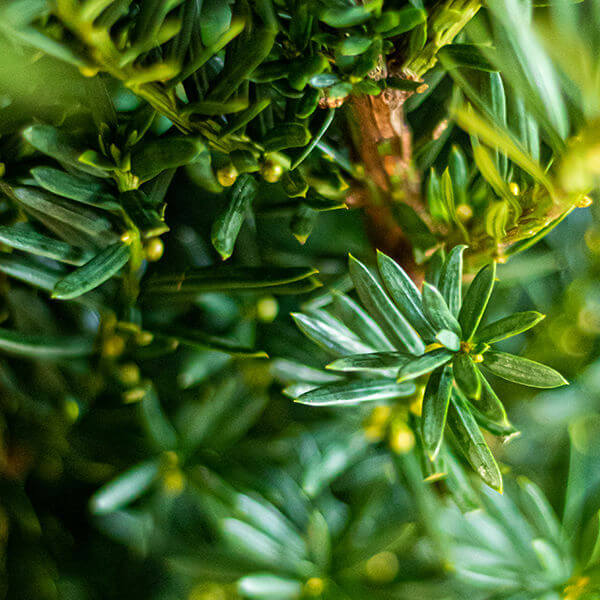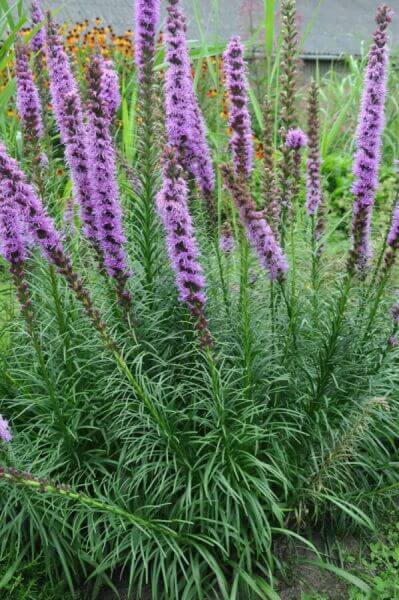Best Hedging Plants For Eco-friendly Gardens
Enhance your garden's attraction with lavish hedge ranges such as Yew (Taxus), Thuja, Laurel, Photinia, and Bamboo, commemorated for their structural stability and ecological advantages.
Yew and Thuja provide evergreen coverage and winter season resilience, while Laurel provides fast development and broad, aromatic leaves.
Photinia adds seasonal beauty with its vibrant red foliage, and Bamboo provides a low-maintenance, serene atmosphere.
These hedges enhance air quality, decrease sound, and develop tranquil, private spaces.
Correct planting, spacing, and maintenance make sure energetic growth and eco-friendly harmony.
Check out how these lavish ranges can elevate your garden's appeal and well-being.
Key Takeaways
Change Your Garden With Lush Hedge Ranges
- Select Yew for its thick, evergreen growth and unrivaled longevity.
- Go with Laurel for its quick growth and broad leaves, ensuring fast personal privacy.
- Choose Photinia for its vibrant seasonal foliage, which turns a striking dark red.
- Utilize Bamboo for a low-maintenance, winter-hardy hedge with aesthetic appeal.
- Space plants 2-3 per meter and prune routinely for optimum development and health.
Popular Hedge Plants
When changing a garden with lavish hedge varieties, it's vital to consider popular hedge plants such as Yew, Thuja, Laurel, and Photinia due to their distinct qualities and advantages.
Yew (Taxus) is extremely respected for its durability and thick, green development, making it a prime option for sustaining landscapes.
Thuja is kept in mind for its evergreen foliage and robust winter season resilience.
Photinia adds seasonal vibrancy with red leaves that darken in time, creating dynamic visual appeal.
Laurel offers rapid development and aromatic, broad leaves, perfect for fast privacy.
Additionally, Bamboo is an outstanding choice for ambiance, using a low-maintenance, winter-hardy alternative that improves the garden's aesthetic with its stylish, swaying walking sticks.
These choices cater to a variety of horticultural requirements and choices.
Benefits of Garden Hedges
Garden hedges offer a wide range of benefits, making them an important addition to any landscape. These natural barriers are cost-efficient to carry out and offer considerable wind protection, boosting air flow and contributing to sound decrease. The dense foliage of hedges like Thuja and Beech makes sure privacy by obstructing presence, producing a serene and remote environment.
Hedges likewise play an essential role in microclimate guideline, offering a stable environment that promotes plant growth and minimizes temperature level variations. Their elaborate leaf structures filter pollutants, improving air quality and adding to a healthier garden environment.
Furthermore, hedges stand out in noise decrease, absorbing and deflecting acoustic waves to lower ambient noise levels. This dual performance of providing both acoustic and visual privacy improves the general serenity and aesthetic appeal of any garden.
Planting and Maintenance Tips
For an effective hedge, meticulous preparation of the planting location is crucial. Guarantee the soil has correct pH and drainage to support strong root development.
Area the plants appropriately for the selected types. Water the hedge frequently during its preliminary development stage, adjusting as needed with seasonal modifications.
Carry out a systematic insect control and illness avoidance strategy, using chemical or natural treatments when essential. Regularly inspect for aphids, mites, and fungal infections.
Apply mulch to keep wetness and reduce weeds. Seasonal pruning promotes thick development and air circulation, essential for plant health.
Following these guidelines will help you cultivate a dynamic, properly maintained hedge that boosts the appeal of your garden.
Spacing and Trimming Guidelines
Spacing and Trimming Guidelines
Proper spacing and trimming are essential for cultivating healthy, visually appealing hedges. Appropriate spacing makes sure each plant gets sufficient nutrients, light, and air flow.
Follow these guidelines for optimum hedge upkeep:
- Spacing: Position hedge plants 2-3 plants per meter to encourage robust growth.
- Pruning Strategies: Routine pruning is important for preserving wanted hedge height and shape. Trim new development in summer season and cut back older wood throughout winter season.
- Seasonal Care: Adjust trimming methods and schedules according to seasonal requirements to ensure plant health.
- Hedge Height: Regularly monitor and trim to keep the wanted hedge height and attain consistent aesthetic appeals.
Sticking to these steps will ensure your hedge flourishes, improving both the appeal and functionality of your garden.
Choosing the Right Hedge
Picking the Right Hedge
Picking the suitable hedge involves examining elements such as mature height, foliage density, and environmental resilience. Effective hedge plant selection requires comprehending each species' development qualities and site-specific versatility.
For instance, Yew (Taxus) provides excellent durability and dense development, while Thuja is noteworthy for its winter season durability. Additionally, thinking about maintenance requirements is vital; fast-growing species like Laurel or Privet demand routine trimming, whereas low-maintenance choices like Bamboo or Ivy might be more effective for those seeking very little upkeep.
Ecological factors such as soil type, light accessibility, and moisture conditions must also direct the choice process. This cautious approach guarantees the picked hedges will flourish, supplying both practical and aesthetic advantages to the garden landscape.
Shipment and Planting Recommendations
To ensure your hedge plants flourish, they need to be delivered by specialized couriers and planted without delay upon arrival.
Follow these essential steps for effective planting:
- Soil Preparation: Improve the soil with organic matter to improve drain and nutrient material.
- Planting Depth: Create a trench twice the width and equal to the depth of the root ball.
- Watering Strategies: Water completely after planting, keeping the soil consistently damp however not filled.
- Mulching: Use a layer of mulch to retain moisture and suppress weeds.
Client Support and Service
Provided the crucial role of prompt support in horticultural pursuits, our consumer support team is readily available six days a week through telephone, e-mail, and social networks to offer professional suggestions and promptly address any concerns. Their dedication to quick reaction times guarantees client complete satisfaction by fixing questions connected to plant health, optimum planting approaches, and upkeep schedules.

Communication Technique
Social network
This extensive support system, strengthened by a stellar 9.3/ 10 consumer score, highlights our commitment to boosting the gardening experience for each client.
Frequently Asked Concerns
For How Long Does It Consider Hedge Plants to Establish?
Hedge plants generally need one to website three years to end up being completely developed, with the precise period varying by types and growing conditions.
Efficient care during this crucial duration is important for robust development. Consistent watering, alert weed control, and appropriate fertilizer application are critical in promoting strong root development.
For example, fast-growing types like Laurel may establish quicker, while slower-growing varieties such as Yew might take longer. Thorough maintenance accelerates the facility procedure, resulting in thick and healthy hedges.
What Are the Finest Hedge Plants for Personal Privacy?
The question of the best hedge plants for personal privacy involves examining evergreen and deciduous options.
Evergreen hedges like Thuja, Laurel, and Cypress offer year-round coverage, making sure continuous personal privacy.
In contrast, deciduous hedges such as Beech offer seasonal personal privacy, shedding leaves in cooler months.
Secret maintenance suggestions for personal privacy hedges include regular trimming, fertilizing in spring, and appropriate spacing-- normally 2 to 3 plants per meter.
Additionally, consistent watering and thorough weed removal are essential for promoting healthy, thick development.
Can Hedge Plants Draw In Wildlife to My Garden?
Yes, hedge plants can draw in wildlife to your garden by offering essential benefits like shelter, food, and nesting sites, thus improving local biodiversity. For instance, yew, holly, and laurel are exceptional for attracting birds, while ivy supports a range of pests.
However, it is very important to note that there are some downsides, such as increased upkeep to manage pests and regular upkeep. Thoroughly picking and preserving hedge varieties can assist stabilize these downsides and benefits, ultimately fostering a lively and sustainable community in your garden.
Are There Any Flowering Hedge Plants Available?
Yes, there are flowering hedge plants readily available that can boost the charm of your garden.
For instance, Elaeagnus, likewise referred to as Olive Willow, produces aromatic white flowers in the fall, adding a touch of elegance.
Photinia, another popular option, showcases dynamic red leaves that grow into a rich green, developing a dynamic visual result throughout the seasons.
To guarantee these plants grow, it's necessary to practice appropriate pruning strategies and seasonal upkeep, such as trimming brand-new growth in the summertime and cutting down in the winter.
These procedures will help keep the health and aesthetic appeal of your blooming hedges.
How Do I Prevent Pests in My Hedge Plants?
To avoid pests in hedge plants, utilize natural pest control techniques and maintain appropriate hedge care. Introduce helpful pests like ladybugs, which prey on damaging pests, to create a balanced environment.
Regularly check your hedges for indications of problem and immediately get rid of any affected parts to prevent the spread. Guarantee the health of your hedges by using well balanced fertilizers and providing adequate water.
Use mulching to keep soil wetness and correct spacing to lower plant tension and promote robust development. These practices jointly help in lessening insect concerns and keeping a healthy hedge.
Conclusion
In essence, picking the ideal hedge ranges such as Yew, Thuja, and Laurel can change any garden into a relaxing sanctuary. These plants offer year-round greenery, improve aesthetic appeal, and offer practical advantages like sound decrease and wind security.
Appropriate planting methods, accurate spacing, constant watering, and seasonal cutting are crucial for ideal growth.
Trusted shipment services and professional client support make sure a smooth experience from purchase to planting, making it simpler than ever to elevate your outside space.
Garden hedges offer a multitude of benefits, making them an important addition to any landscape. These natural barriers are cost-efficient to execute and offer significant wind defense, improving air circulation and contributing to sound reduction. The thick foliage of hedges like Thuja and Beech guarantees personal privacy by obstructing visibility, developing a remote and peaceful environment.

Pruning Techniques: Regular pruning is important for maintaining desired hedge height and shape. Trim brand-new development in summer season and cut back older wood throughout winter.
Comments on “Best Hedging Plants For Public Spaces”